Creativerse, a Minecraft-inspired creative open world adventure game, is quickly expanding. Released in May and developed by Playful Corporation (Lucky’s Tale), the free-to-play building game has already brought in over three million downloads on the PC and Mac platforms alone. Furthermore, the game occupied both top spots on Steam’s top grossing charts for a short time after launching the Welcome Bundle, the second of two add-on packs that include design recipes and resources. The other add-on, the Pro Pack, includes several toys for users to play with, including a hang glider, more inventory slots, and other benefits.
The early success of Creativerse demonstrates how there is a strong appetite for more titles in the open world building game genre, even with the tremendous success of Minecraft. Creativerse appeals to players of all ages, especially families, with parents playing with their children. The game is almost certain to grow even further when it releases on more platforms.
Paul Bettner, CEO and founder of Playful Corporation, sat down with AListDaily to discuss the growth of the creative game genre, releasing a game in the wake of Minecraft’s success, and how to maintain long-term engagement with the audience.

What do you think draws players to Creativerse?
As people come into this world, they realize that they can be the architects of it. They can shape the world itself. I think what sets these types of games apart is that, with other games, you solve challenges in ways the game presents to you. For example, you shoot things with Grand Theft Auto, and a different game might have you going on quests. Creativerse has some of those elements, including monsters to slay, but the fundamental way to solve problems is by being creative—figuring out a problem and using creativity to solve it. That includes building a wall to block off the monsters, building a house to survive the night, or building a castle for you and your friends to hang out in. The fundamental tools in the game are all about being creative.
Three million installs is quite impressive. How were you able to able to reach this size audience?
It’s pretty incredible for something that we haven’t gone out of our way yet to promote. We just kind of launched it and we’ve been building this community organically. The cool thing about this genre, which is inspired by games like Minecraft and Roblox, is that there’s such a strong community on Twitch and YouTube. I don’t think there’s any other genre that has quite the same connection between the folks watching videos and those playing the games. So, we can attribute a large part of our success to the work we’ve been doing with our community.
The Steam community for Creativerse is welcoming, friendly and nurturing. Game communities take a lot of different tones, and we’ve put a lot of work into being there for our community, listening to them, and fundamentally inviting them into the process of making the game with us. We’ve done 43 releases of the game, mostly while we were in Early Access, and tailored those releases around what our community has been asking for has shaped it into the game they wanted us to make—making that connection with the community. That connection is what reverberates onto YouTube and Twitch, creating a grassroots player base without us having to do a ton of marketing.
Have you been working with streamers to promote the game?
Yes, we’ve only started doing that on a tiny scale, but it’s been so successful. When we reached out to YouTubers to sponsor Let’s Play videos, we didn’t want them to hide the fact that it was sponsored content, but we were worried that viewers might not take to that. We’ve actually seen the opposite. When a creator announces that a video is sponsored, but they have things to give away, they get tons of thumbs up and they end up being some of the most-viewed videos on their channels.
How does a game like Creativerse make a name for itself with big games like Minecraft on the market?
The way I like to look at it is that there have been these games throughout the years that have been looked at as though they were singular events. I remember the original EverQuest. We all played it, but even at the time, we felt that there were several elements that made it hard to play and added friction to the experience. What I was feeling especially was that this game could be much more if you took the core formula and improved it by making it more accessible and easier to play with friends. That was a controversial thing to say at the time because EverQuest was doing very well and people thought it captured the peak of the market.
But I think Blizzard understood the same thing I did, and they released World of Warcraft, showing the world that the 400,000 subscribers EverQuest had was just scratching the surface of what the genre was. So, when I look at Minecraft now—which is a phenomenal game, and I’m hugely inspired by it—I still see this strange thing in the industry where people will look at it and say, “That’s it.”
That’s not how the games industry works. We invent and discover genres; then we build lots of great games for them. Imagine if first-person shooters stopped at Wolfenstein 3D. It doesn’t make any sense. I’m proud to be working on a game that expands the open world creative sandbox game genre, and there’s a lot more to contribute to it.
What do you think is the attraction to open world building games?
If you look at the toy world, what you’ll find is the most popular toy in the world is Lego. I think the reason for that is because Legos are both creative tools for self-expression and puzzles to be solved. They’re accessible puzzles too. Give someone a pile of Legos, and almost anyone can pick them up and start making something. But give them a blank canvas and a paintbrush and a lot of people will find that overwhelming.
I think that’s the magic of this genre. Everyone inherently wants to be creative, and giving people this toolset turns everyone into a potential creator. They look at the simplicity of blocks and think about how they could make a castle. I think that’s why this genre is so big and growing.
Minecraft has proven that people are willing to purchase this kind of game. Why go with a free-to-play model?
I’ve been through quite a journey in my career, from working on boxed retail games, to working on digital download games, to free-to-play online games, mobile and now Steam. Recently, especially with our work on mobile, I’ve become attached to what free-to-play does. As a family and community game, it removes that last barrier and lets people come together without having to pay an upfront charge. You get a huge community when you remove that friction, and you see that with games such as League of Legends, Dota 2, Hearthstone and certainly mobile games.
I also think that the industry has realized that it’s a wonderful business model. It allows for a more flexible and ongoing relationship with our customers, where we can provide increased value over time without having big singular events like expansions and sequels.
How do you convince players to pick up premium add-ons?
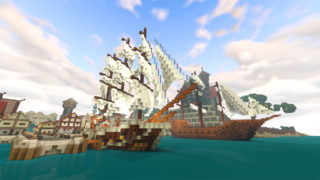 This is something that we’re constantly playing around with, and it gets back to us communicating with our community to build things that are valuable and things that people are excited to buy. [Monetization] is a tricky thing when it comes to free-to-play development, and I understand the psychology behind [purchases], which has a very slot machine-like mentality. I know why a lot of game studios pursue more exploitive free-to-play mechanics. But we decided not to do that with Creativerse. Our desire is to create a free-to-play game where the things that you purchase feel genuinely valuable, and we’re not taking anything away from the free core part of the game.
This is something that we’re constantly playing around with, and it gets back to us communicating with our community to build things that are valuable and things that people are excited to buy. [Monetization] is a tricky thing when it comes to free-to-play development, and I understand the psychology behind [purchases], which has a very slot machine-like mentality. I know why a lot of game studios pursue more exploitive free-to-play mechanics. But we decided not to do that with Creativerse. Our desire is to create a free-to-play game where the things that you purchase feel genuinely valuable, and we’re not taking anything away from the free core part of the game.
Think about Central Park, and how it’s a public space where people love to go and spend time together for free. But there’s all this extremely valuable real estate that borders Central Park because of the foot traffic. That’s the model we want to go for, meaning that the free core of Creativerse needs to be a wonderful experience that doesn’t feel like it’s missing anything. Then we want to build stores around it so that they can buy things to bring into the park.
What is the strategy for growing the Creativerse audience moving forward?
There are still a lot of players who may not have heard of Creativerse yet, but would probably love it. I think the key to growing is doing what we’ve been doing but at a bigger scale. One of the things we set out to do was release updates on a regular basis, which is what we discovered in mobile gaming and want to bring to PC. If we can do that right, I think it will be one of the big things that draws people back while increasing the audience and excitement for the game. Creativerse has been growing because the audience knows that if they participate in the game, talk to us, and talk to each other, they’re going to see the game continue to grow in the ways they want it to. It’s the active community that gives us content ideas, and the regular release cadence is what’s stoking the fires of growth for Creativerse. The constant stream of new stuff on both the free side and stuff to buy in the store is the key to keeping ongoing engagement.
The most successful games in this genre have the most vibrant communities and developers that are always updating the game.
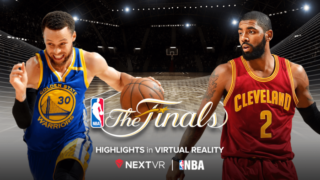
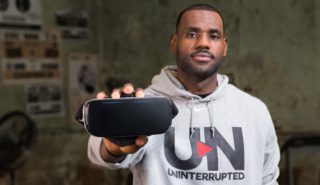
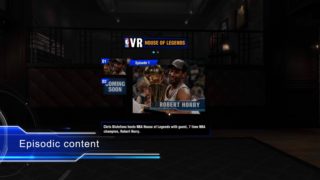
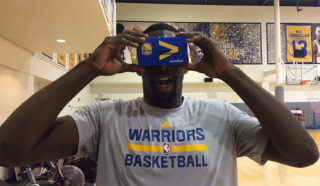
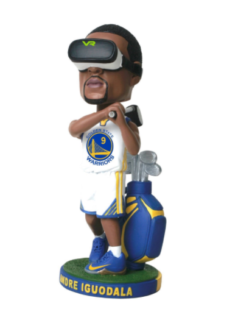
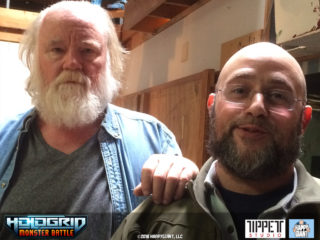




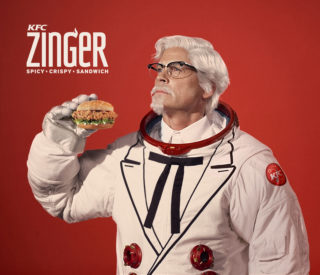

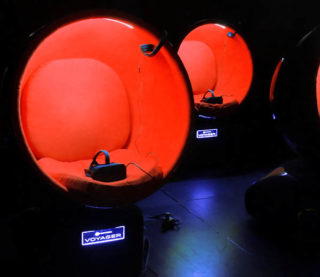 “With the success at SXSW and CinemaCon,” Cornillow continued, “we thought it would be a very selfish move to not open the experience up to the public. The reception was so great that it was almost a no-brainer to open this up and let everyone experience it.”
“With the success at SXSW and CinemaCon,” Cornillow continued, “we thought it would be a very selfish move to not open the experience up to the public. The reception was so great that it was almost a no-brainer to open this up and let everyone experience it.”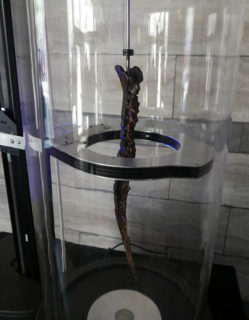 Although there is a VR video game called The Mummy Prodigium Strike currently in development by Starbreeze (which also
Although there is a VR video game called The Mummy Prodigium Strike currently in development by Starbreeze (which also 
